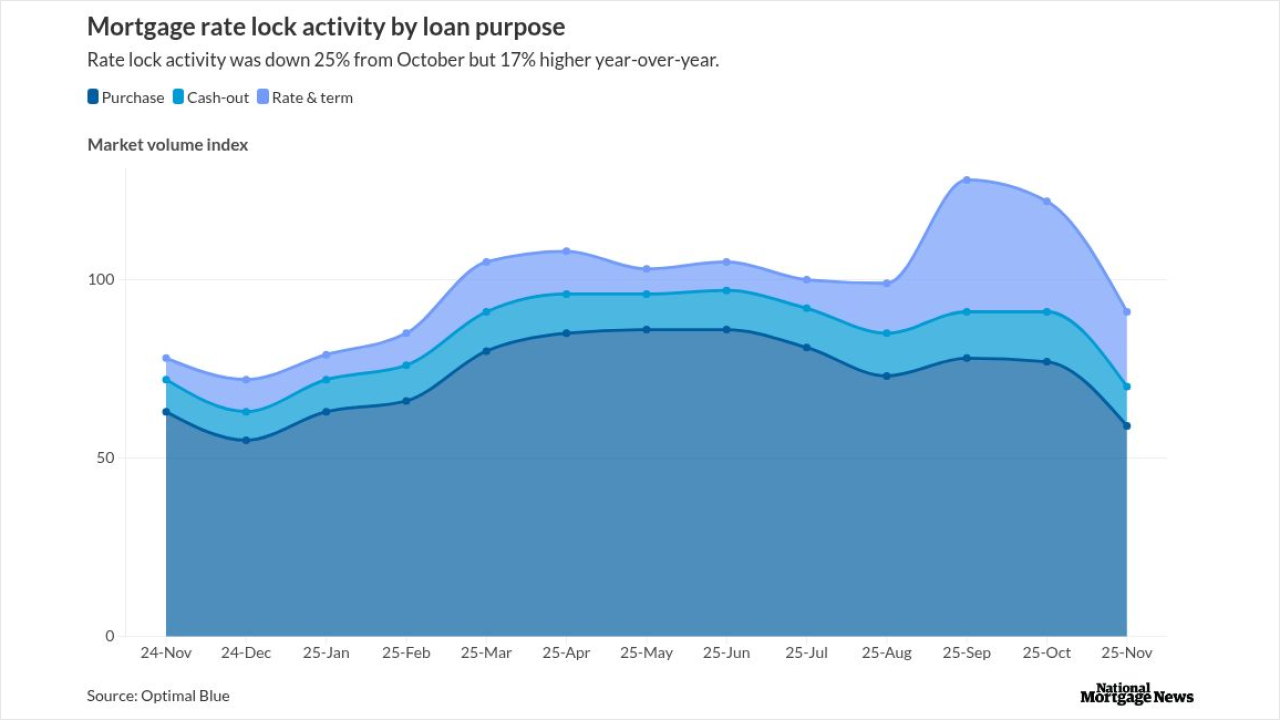Speculative-grade loan issuance dropped precipitously in March and April, following so-called Liberation Day tariff announcements, but even if that volume remains subdued the collateralized loan obligation (CLO) market may still be headed for a record year of issuance as it recycles existing loans.
This year started out gangbusters, with January's leveraged loan volume of $69.92 billion topping the $62.22 billion in January 2024, and February's $59.7 billion well ahead of last year's $40.6 billion, according to PitchBook LCD. Then loan volume plummeted to $35.0 billion in March and $19.7 billion in April, far below last year's $43.5 billion and $55.2 billion, respectively.
The March drop occurred after President Trump's February tariff policy announcements impacting Mexico, Canada and China, and reciprocal tariffs affecting trading partners globally. Retail investors pulled out $4.8 billion from U.S. loan funds during the week ending April 9—the most severe weekly exit on record, according to PitchBook—and $11.8 billion in the eight weeks prior to April 23.
While there may be strong CLO demand for loans, that demand becomes very specific to the credit itself.
Loan volumes rose in May, to $40.7 billion, after Trump tempered or delayed some tariffs, and June volume appeared headed higher still, totaling $28.0 billion by June 12. Tracy Chen, portfolio manager at Brandywine Global, attributed the recent increase to stabilizing interest rates and macro sentiment, as well as clearing the loan pipeline that was on hold, "technical demand" from CLO managers in need of loan collateral, and improving pricing for issuers.
Compensating for the slump
CLO managers made up for the slump in new loans by purchasing assets in the secondary market, which saw its trading volume increase to $109 billion in April, up from $103 billion in March, and 47% higher than the $70 billion average over the last 12 months, according to the LSTA.
The vibrant secondary market in turn fueled CLO managers' new CLO issuance year-to-date, which reached a healthy $92.1billion as of June 16, just 3% shy of that issuance over the same period in 2024, according to PitchBook. Total CLO issuance, including refinancings and resets, was $229 billion.
Lukatsky noted that JPMorgan recently returned its full-year 2025 CLO issuance forecast to $180 billion, after lowering it to $150 billion in April, and a number of other firms have maintained "their initial CLO volume projections for 2025, most of which topped $200 billion to approach or surpass 2024's record issuance of $201.95 billion."
The flood of CLO refinancings and resets is expected to continue. Sean Griffin, CEO and executive director at the LSTA, said that higher-cost transactions issued in 2023 will likely take that route, especially if spreads tighten further. CLO AAA spreads as tight as SOFR plus 110 bps early in the year widened to SOFR plus150 bps, but more recently they have fallen to around SOFR plus 130 bps and even a bit tighter.
Just because a loan has an attractive spread doesn't make it a great fit for a CLO portfolio.
In addition, he said, market volatility stemming from potential tariffs and geopolitical conflicts has dampened the LBO and M&A activity that generates loans attractive in new CLO issues.
"We've had a confluence of factors contributing to this the lack of new loan issuance, and to the extent volatility persists, I would expect this theme to continue," Griffin said.
According to recent input from market participants, he said, solid single B credits are pricing around SOFR plus 300 with stronger ones in the high 200s.
"While there may be strong CLO demand for loans, that demand becomes very specific to the credit itself," Griffin said.
Continuing volatility is likely to reduce demand for CCC-type credits with more tail risk, he added, since fixed-income investors' upside stops at par while they risk losing all principal. Consequently, rather than replacing a maturing loan in its CCC bucket, the manager may leave that bucket-space open to accommodate future downgrades.
"Just because a loan has an attractive spread doesn't make it a great fit for a CLO portfolio, especially further down the ratings spectrum," he said.
Cautious optimism
Market volatility picking up again, if the Trump administration's tariff negotiations prove unsuccessful, for instance, could hobble loan issuance once more. Unable to source higher-yielding loans in the primary market, CLO managers forced into secondary purchases may have to buy tighter spread paper, squeezing returns, Chen said, and CLO bids could drive up secondary loan prices, further reducing yields.
"CLO issuance could slow or become more selective, as deals may not meet return thresholds," Chen said, adding that could result in "more static or short-dated CLOs, which are easier to place in tighter spread environments."
Should market volatility subside, however, the loan market could feel the impact quickly, according to Griffin. Spreads could quickly compress and refinancings and resets could jump in volume, he said, adding that loans stemming from "M&A and LBO activity would pick up a little bit further down the road, taking at least a quarter if not longer."




